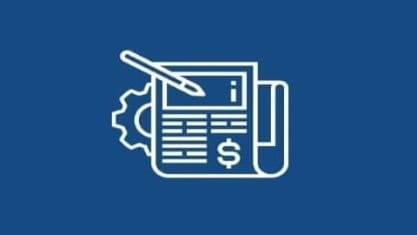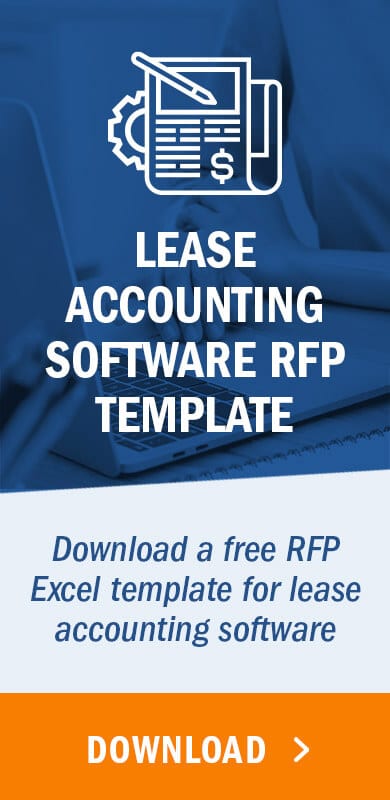So ask yourself, “should I risk possible material misstatements, or is it time to start thinking about incorporating lease accounting software?” We suggest the latter. As you are reviewing everything necessary to transition, it’s time to evaluate all the requirements you’ll need to be in compliance.
Searching for the right lease accounting software may seem like a daunting task. However, it really isn’t difficult when you know what to ask. As you create an RFP for one of the most important decisions you’ll need to make, simply manipulating your company’s existing software RFP from the IT department isn’t enough.
Lease Accounting Software RFP Samples:
You don’t have to reinvent the wheel. We created these sample RFP templates for both GASB and FASB/IFRS that you can use to source your lease accounting software. Just drop in your company name and go.
Your lease accounting software RFP must contain questions on the following:
New FASB, IFRS, and GASB lease accounting standards functionality
For companies that comply with IFRS 16, there are 2 transition methods: full retrospective and cumulative approach (for which there are 2 options). It needs to calculate all 3 methods for each individual lease. Also, it should be able to provide complete disclosures.
Performance accounting
Software should be sophisticated enough to:
- Provide total rent, inclusive of contingencies. Leases often include contingencies like a percentage of sales or usage.
- Calculate short and long-term lease liability, while amortizing the right-of-use (ROU) asset. ROU isn’t amortized using the straight-line method unless it’s impaired.
- Ensure accountability by providing an audit trail for every change made to each lease. The software should track who made a change, what they changed, and when, as well as who approved it. If one person enters or modifies a lease, then someone else should approve those changes. For publicly held companies, this functionality is key to complying to Section 404 of the SOX Act.
- Send alert notifications for lease renewals and deadlines to ensure start and end dates are not missed, which can cause unnecessary incremental costs to the company.
- Elect 3 practical expedients that have to be selected together and the other 2 that could be selected separately.
- Adhere to restrictions on who has access to what, based on their role and/or location.
Deployment/utilization
The overall functionality of a lease accounting solution is ease of use, data collection, useful life charts, etc. are very important considerations. Some software providers already have key functionalities in place. Others may say they have the functionality, but are still working out production issues. It’s good to find out if specific features/capabilities are in production, in development, or live – and, whether auditors reviewed their software for efficiency.
Report generation/document retrieval
Software should enable users to access and download documents and reports with ease.
Currency, translation and re-measurement
Software needs to store 3 currencies: transactional, functional and reporting. These currencies allow the software to perform not just translations, but re-measurements as well, which is required under the new standards.
Ex.: Under the new lease accounting standards, an ROU asset is a non-monetary asset, while the liability is a monetary liability. This is different from the current rules. Your software choice should be able to re-measure the ROU asset from transactional currency to functional currency using “historic currency rates,” then translate it from functional currency to reporting currency using current rates.
Borrowing rate charts
Software needs to be able to assign borrowing rates for different lease terms, currencies, and subsidiaries in your lease portfolio. As boards specify, there is no one size fits all for the discount rate. It should be able to centrally control discount rates for each currency, subsidiary, and lease term.
Embedded leases, lease and non-lease components
Software has to be able to separate the lease and non-lease components by classification of asset, while properly identifying all embedded leases. Under the new lease accounting rules, embedded leases have to be recorded. This wasn’t the case with the old rules.
Lease duplication prevention
Software should have the ability to capture unique characteristics to prevent the same lease from being entered in a different way. Ex. “corporate headquarters” or “corporate HQ.”
Seamless implementation
The new lease accounting standards have different compliance dates for public and private companies. During your software consideration process, get a clear understanding of whether your company will be onboarded and functional within the proper timeline for standard compliance.
Also, how difficult or simple will the transition be? Will there be any disruptions to your current system? Will scheduled maintenance affect operations? Is there an estimation for unscheduled down times? And, who will you speak to when you have questions?
Service and support
Inquire about the number of developers on the software provider’s staff. This is an important question because if, for whatever reason, lease accounting standards change, you’ll want to feel comfortable knowing there are individuals immediately available to rebuild calculations and re-write code.
Finally, LeaseQuery can’t state enough how important it is to ask who will service your account once the software is installed. A primary value-add when purchasing the best lease accounting software is having accountants that specialize in lease accounting available to you for answers to your questions on the new standards.



